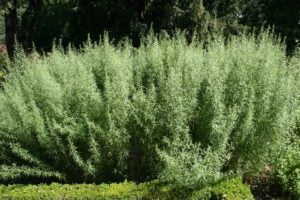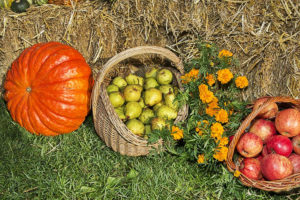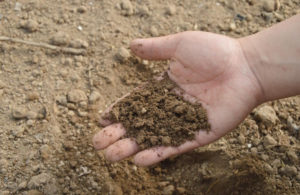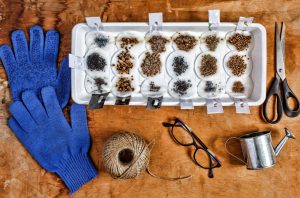In the second week of the month summer residents complete restoring order in the flower beds, remove all unnecessary, faded. If weather permits, continue autumn planting. Dig plants that do not winter in the open ground.
Care Garden bed
If you have not had time to dig up the garden beds, you should hurry with this work. In autumn digging the soil is not leveled, and left large layers-it helps to retain moisture. In addition, when it gets cold, larvae and eggs of pests, rhizomes and weed seeds will freeze in such layers. In the future, the layers disintegrate themselves. However, there is another point of view: it is not necessary to dig at all!
Who has not had time-remove the cabbage, radish, daikon, turnip. In this case, do not rush to cull plants that do not have time to fully develop, and determine their rearing and forcing.

You can grow: cauliflower, lettuce, leeks, celery, parsley.
Suitable for forcing: chard, asparagus, perennial onions, spicy plants that have accumulated in the roots, rhizomes nutrients.
Remove and lay on storage of large tubers of the root celery, small use for distillation.
Leaf and petiolar celery we dig up by the roots and transplant into a container like a regular houseplant, making holes in the bottom and arranging the drainage of expanded clay, watered. Such a container is placed on the kitchen windowsill as a decorative mini-garden, collecting the harvest from it within a month.

Before the cold, cut off all the parsley and parsnip greens, covering the remains of plants with dry leaves, sawdust layer 8-10 cm or spruce branches. In the spring, the shelter is removed as early as possible, and the soil around the plants is loosened. The greens will not keep itself waiting long.
Part of the tubers of Jerusalem artichoke remove, and the rest leave for the winter in the soil to use them, digging during thaws and early spring.
Garden chores
Before the onset of cold weather, autumn planting of seedlings of fruit and berry crops is carried out in pre-prepared seats. If you do not have time to plant seedlings of pears, cherries, plums, apples, raspberries, they are dug in dry trenches or grooves (without stagnation of water), falling asleep to the ground half the height of the trunk or Bush; the soil is compacted. The best plants to put in the direction from North to South, not tight.
In clear weather, prepare planting holes for spring planting. To protect seedlings and young trees from rodents, the trunks are tied with spruce branches or dry stalks of reeds, cattail.
To improve the immunity of fruit trees is not too late to treat their crown 5% urea solution, and when the leaves fall-copper-containing drugs (according to the instructions).
The probability of diseases of the garden significantly reduced if you remove and destroy mummified fruit and fallen leaves to put in compost. And yet it is time to implement all the important preventive measures.
Tasks of the florist
Do not rush to cover the roses, minor cold only “harden” plants.
The most resistant varieties of roses only Spud the garden ground to a height of 20-30 cm, and roses from other garden groups are well covered with spruce branches, making it a hut. At the same time, not a strong contraction with twine is used or simply cover at the base of the hill of dry leaves, covered with slate and other similar materials.
It is necessary to cover roses in dry weather, so that the plants are not wet.

In warm regions, where, despite the cold, still bloom the last flowers of roses, spend their new planting. The advantages of autumn planting of roses lies in the fact that the plants have time to root well, it is better to develop and bloom before those that are planted in the spring or summer. Rose seedlings must meet the standards of planting material: be strong, with 2-3 stems, without signs of mechanical damage and disease, without pests.
In dry clear weather continue to collect seeds of flower annuals.

Lawn and pond care
In early October, clean the lawn from dead grass and fallen leaves of trees and shrubs. A good helper in this work will be a garden vacuum cleaner.
If you did not do this last week, spend sanding the lawn, scattering on the surface of a mixture of equal parts of sand and peat. The layer of sanding should not exceed 0.5 cm. Align it with the top dressing phosphorus and potassium fertilizers (at the rate of 3-5 g per 1 sq.m), which increase the winter hardiness of lawn herbs.
If the weather is not allowed to do this before, spend, without postponing more aeration of the lawn with a special aerator or at least piercing the sod to a depth of 5-10 cm pitchfork. This will extend the life of your lawn.
Continue to remove fallen leaves from the pond. If it remains to winter fish, and you can not regularly update the hole, the pond must be installed a special oxidizer for pumping fresh air and the output of harmful gases. If there is no such device, it is possible to lower in water sheaves of straw or sheaves of a cane, however it is necessary to understand that water thus can rot.

If there are no living creatures in the pond, then we lower the water. This is especially important for concrete ponds with steep walls, which ice can seriously damage. If for some reason you do not plan to drain the water, lower large pieces of foam, old car tires or a bunch of plastic bottles into the pond, otherwise the ice can break the walls of the reservoir.
After the descent of the water the bottom of small ponds, if they were the roots of aquatic plants, should be covered with leaves and spruce branches. The water pumps must be removed from the pond and the water must be thoroughly flowed from within hose.






